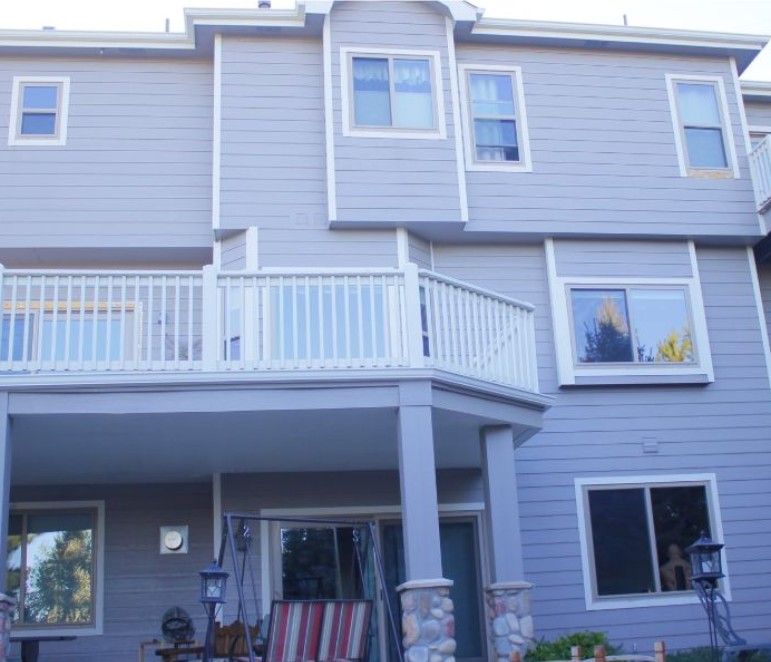
How Often Should You Schedule Window Replacement in Texas?
Windows are essential to your home’s comfort, energy efficiency, and overall appearance. They bring in natural light, improve airflow, and protect your interior from harsh weather. However, in Texas, where homes face intense sunlight, humidity, and strong seasonal storms, windows often deteriorate faster than homeowners expect.
On average, most windows last between 15 and 25 years; however, in Texas, this lifespan is often closer to 15 to 20 years due to the state’s extreme weather conditions. Regular inspections and maintenance can extend their life, but eventually, all windows will show signs of wear. When that happens, timely window replacement in Dallas can make a significant difference in comfort and performance.
Replacing outdated or damaged windows helps improve insulation, reduce energy costs, and increase your home’s value. By recognizing early signs of wear and understanding how local weather impacts window lifespan, homeowners can plan replacements strategically and enjoy long-term savings and efficiency.
The Average Window Lifespan in Texas
Texas weather puts a lot of stress on windows. Constant UV exposure, high temperatures, and moisture can cause frames and seals to deteriorate faster than in milder climates. On average, well-installed vinyl windows last about 20 years, while wood windows may need replacement sooner if exposed to humidity or rain. Aluminum frames tend to last longer but aren’t as energy-efficient.
Quality installation plays a huge role in longevity. Even the best materials won’t perform properly if windows are poorly fitted or sealed. Over time, small gaps can lead to drafts, water leaks, and structural damage. Regular inspections help identify these issues early and prevent bigger repairs later.
Signs You Need Window Replacement
Several signs can indicate your windows are due for replacement. Drafts or noticeable temperature changes near your windows often mean the seals have failed. This allows outside air to enter and conditioned air to escape, forcing your HVAC system to work harder. If your energy bills have been rising, inefficient windows could be to blame.
Condensation between glass panes is another warning sign. This occurs when the seal between panes breaks, allowing moisture to enter and reducing insulation. Windows that stick or refuse to open easily may also have warped frames from heat or humidity. Faded furniture or flooring near windows suggests that your current glass may lack UV protection. Replacing old windows restores both efficiency and comfort in your home.
How Texas Weather Impacts Windows
Texas homeowners face unique challenges due to the state’s diverse climate. Intense sunlight can fade finishes, weaken seals, and cause vinyl to warp over time. Energy-efficient windows with low-emissivity (Low-E) coatings help reflect heat and block harmful rays, making interiors cooler and safer.
In coastal or humid areas, moisture is another concern. High humidity can cause wood to swell or rot, while metal frames may corrode. Vinyl and fiberglass perform better in these conditions and require minimal upkeep. Seasonal storms can also bring debris and strong winds that damage glass and frames. Installing double-pane or impact-resistant windows adds protection and longevity.
Benefits of Replacing Windows on Time
Scheduling window replacement before major issues appear provides long-term savings and comfort. Modern windows are far more energy-efficient, helping regulate indoor temperatures and lower utility costs. New materials and designs also offer improved soundproofing, reduced UV damage, and enhanced overall home security.
Timely replacement improves your home’s curb appeal and resale value. Buyers appreciate energy-efficient upgrades, and new windows are one of the most noticeable improvements you can make. Replacing outdated models also means less maintenance since modern windows resist warping, cracking, and fading.
How Often Should You Replace Windows in Texas?
Most Texas homeowners should plan for window replacement every 15 to 20 years. However, certain factors may shorten that timeline. Homes exposed to direct sunlight or coastal weather might need replacements sooner, while shaded or protected properties can go longer. Material quality and maintenance habits also make a difference; regular cleaning and inspections help extend a window’s lifespan.
If you’re unsure, look for recurring drafts, moisture between panes, or visible damage around the frame. Even small cracks or gaps can worsen quickly under Texas heat. Upgrading before failure not only prevents energy loss but also saves money on repairs and cooling costs.
Choosing the Right Windows for Texas Homes
When planning your next window replacement, consider models made for hot climates. Windows with Low-E glass and argon gas insulation are ideal for Texas’s weather conditions. They help keep your home cool in summer while maintaining brightness and comfort.
Material choice also matters. Vinyl and fiberglass are durable, low-maintenance options that resist warping and moisture damage. Aluminum can be used for its strength, but it needs thermal breaks to reduce heat transfer. Wood-clad windows offer a timeless look but require more upkeep in humid environments.
Proper installation is just as important as the materials. Even the most advanced windows won’t perform well if they’re poorly sealed or misaligned. Hiring professional installers ensures long-lasting results and maximum efficiency.
Conclusion
Windows play a vital role in your home’s energy performance, comfort, and value. Replacing them at the right time helps you stay ahead of weather damage, reduces energy costs, and enhances the beauty of your space.
When it’s time to upgrade, trust Conservation Construction of Dallas. Our team specializes in window replacement designed for Texas homes, using durable, energy-efficient materials built to handle the state’s unique climate. Contact us today to schedule your free consultation and discover how new windows can transform your home’s comfort and efficiency.
